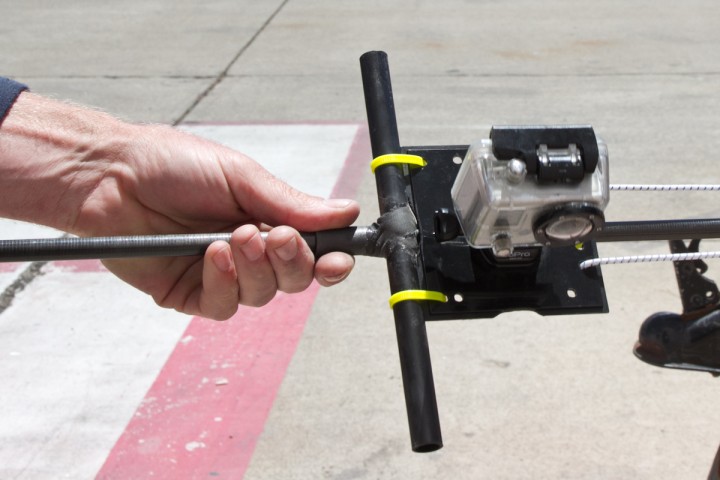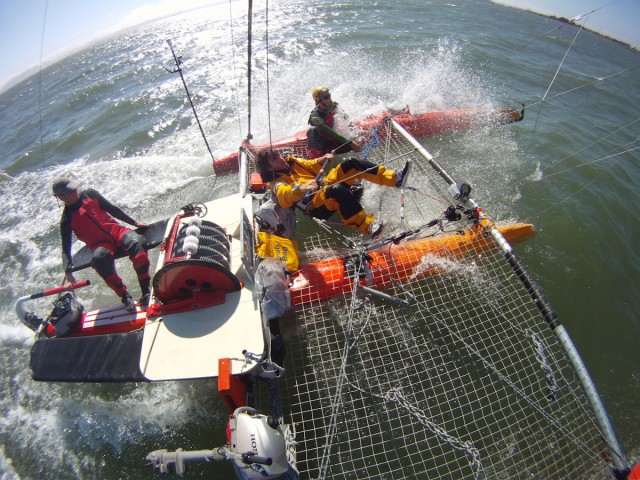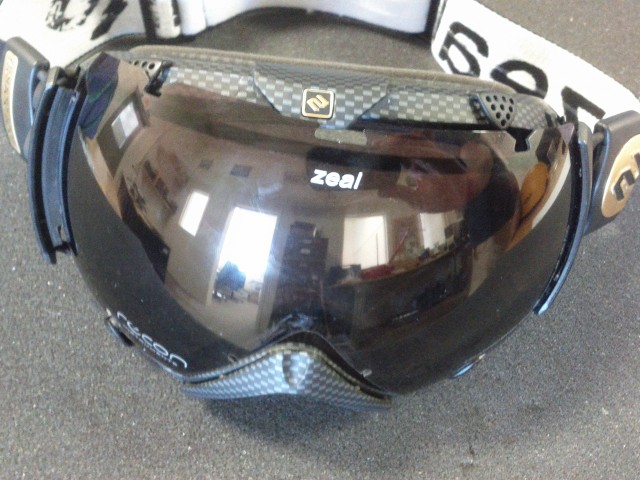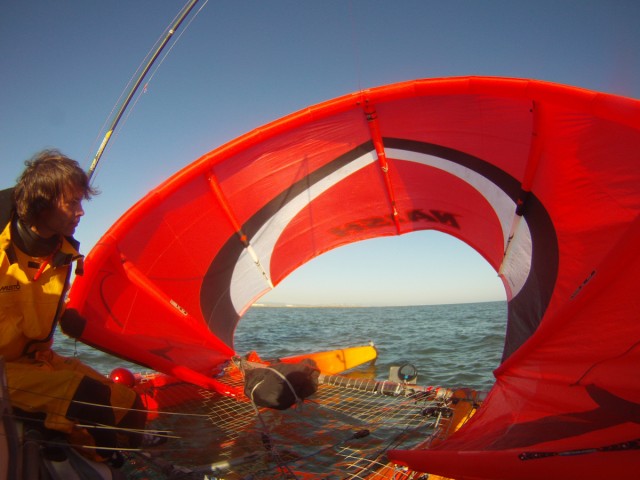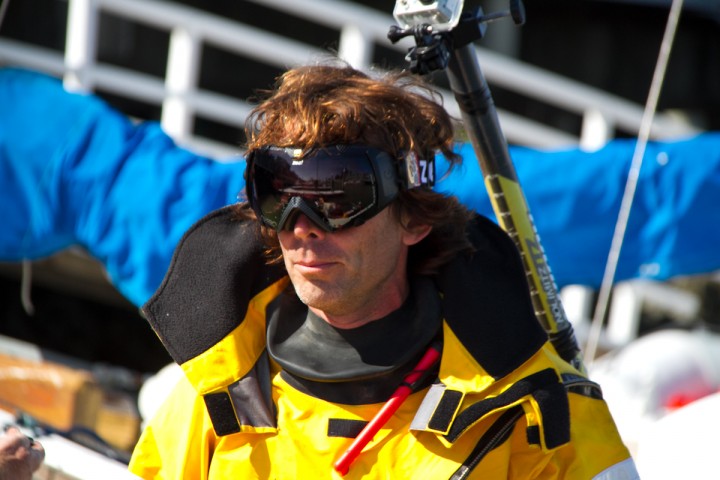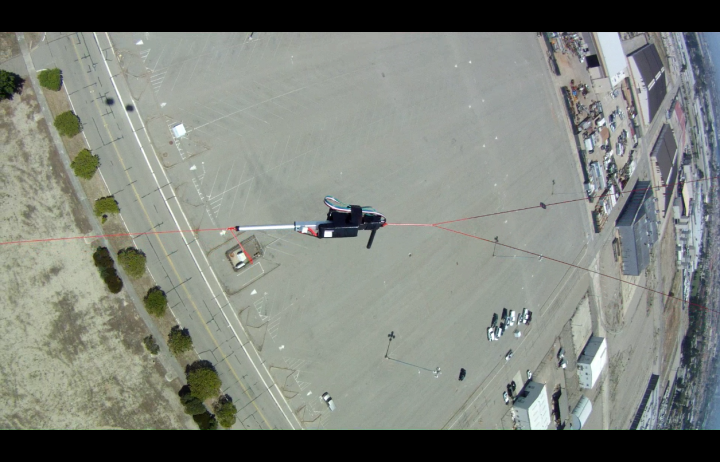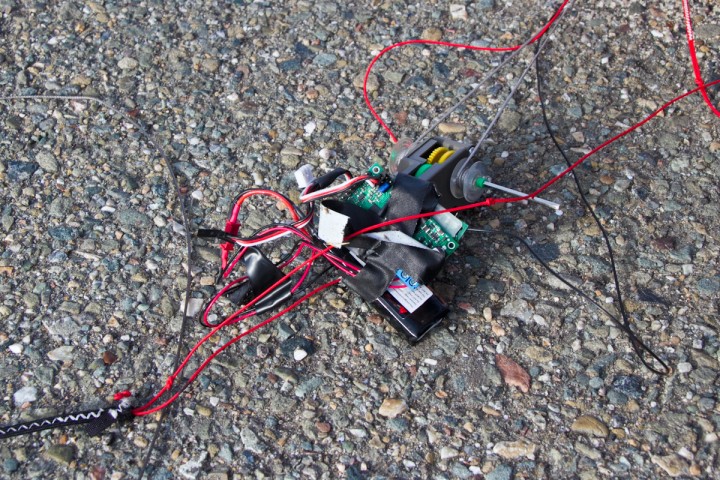June 2011 Archive
Kitefoiler test – Jun 22
6/22/11Don, Joe, and Dudu tested the Kitefoiler again today, using the old 30 sqm kite from 2003 to compare performance to our newer kites.
HMD Goggle Disassembly
6/21/11We got a pair of goggles with built-in head mounted display (HMD) and GPS/gyro/altimeter in order to see if they would be useful for kiting, if the electronics could be hacked to display other information, and to learn about the design of the display and optics. The goggles, called “Transcend GPS,” were produced by Recon Instruments and Zeal Optics, primarily for the snowboarding market.
In kiteboat tests last week, we found that the display was not very convenient for viewing while flying a kite, since the user must look down to see it. The display optics are large enough to be obtrusive even when removed from the goggles, and would not fit well on a helmet or glasses. The display […more]
Kitefoiler Test – Jun 21
6/21/11We took the Kitefoiler out again with the original J-foils, as they’ve proved the most reliable in allowing us to sail upwind. We took out an old kite from 2003 that has a high aspect ratio and a very simple bridle, in order to compare its performance to our newer kites. The wind proved light, so we did not sail quickly enough to get the boat on the foils. We did, however, verify that the simple bridle on the kite was much easier to handle on the launching mast than the more complicated ones. Also, we realized that the launching mast needs to be expandable, in order to be made taller for larger or higher-aspect-ratio kites.
Additionally, Don and […more]
Kitefoiler Test with J-foils – Jun 15
6/15/11We tested the Kitefoiler using the original Trifoiler J-foils with the Kitefoiler extensions. We used the Tom Speer-designed T-foil rudder.
The wind was light. We used the electric winch handle to successfully winch the kite back to the boat.
Dual bar setup. Launch bar and flying bar.
Don tried out our new Zeal goggles that were equipped with GPS (https://www.zealoptics.com/transcend/). He and Jamie purchased the goggles to play with the sensor inside and to see if they could modify the display. The goggles are designed to display speed information inside the eye view space. Don found that the display was not in quite the right place. Modification will begin when Jamie is back from vacation.
Kai View […more]
Lifting Kite AoA Actuator
6/8/11Today we remotely controlled our newest inflated Rok lifting kite’s angle of attack (AoA) using a linear actuator in the kite’s bridle. The actuator was controlled from the ground via bluetooth using an Android phone and tablet. The kite flew with comparable stability and lift to a standard-issue Rok that we used as a control, even after some bridle adjustments to accommodate the new actuator.
We found that the 10cm range of the actuator was enough to make a noticeable difference in the kite’s elevation and line tension, but not enough of an adjustment to explore the full useful range of AoA. In the next test we will use a pulley system to double the effective range of the actuator. […more]
AoA adjuster test with G9 rokkaku
6/2/11We flew the G9 rokkaku kite at the runway, and again at the parking lot outside the shop, to test the angle of attack adjuster that Don and Jamie have been working on. The adjuster operates by changing the length of the back lines. While flying, the front lines take most of the load–the back lines take only about 25%. Shortening the back lines changes the angle of attack so that there is less load on the flying lines, which is helpful for reducing the force on a winch when reeling in the kite. Meanwhile, lengthening the back lines would change the angle of attack to project more kite area and increase the kite’s power, in order to lift a […more]
